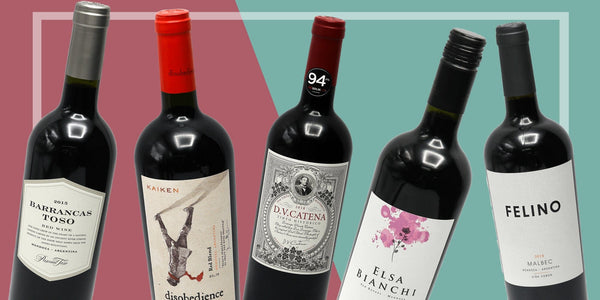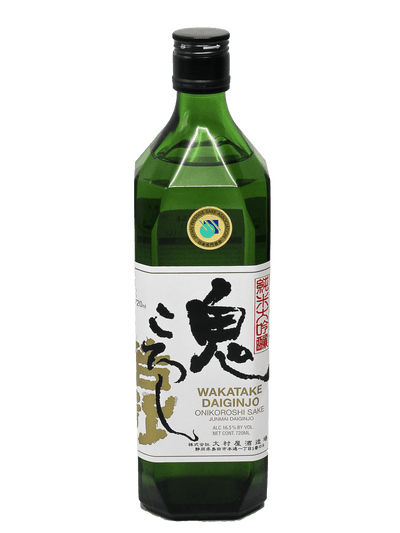Have You Considered Wines from Argentina?

Aside from producing wines with one of the best quality to price ratios today, Argentina offers a rapidly-increasing variety and style to suit almost any occasion or taste. Did you know that this South American country, Chile’s neighbor, has the world’s highest vineyard and also the most southerly? That Argentina produces more than just Malbec wines, including stunning Pinot Noir, Sauvignon Blanc, Chardonnay, and unique blends? That it’s home to intriguing and enticing domestic varietals like Torrontés, Criolla, and Bonarda? With increasing production, imports, and abundant Argentine wine easily for sale online, it’s time to sample what Argentina has to offer!
Most wine from Argentina comes from one vast province, Mendoza, and it’s most famous selections are products of one grape, Malbec, which originated in the Cahors region of France.
However, Malbec, and many other wines from Cabernet Sauvignon, Merlot, Syrah, and the varieties mentioned above abound from north to south. One key to quality wine production is the huge variation in vineyard altitude in Argentina, including numerous high-altitude vineyards, as well as the county’s relative dryness and its numerous valleys. Snowmelt from the Andes mountains provide sustenance through drip irrigation, but the dry, high, sun-filled, and often windy locations provide excellent grape growing conditions, drastically decreasing the need for invasive viticulture techniques including the use of pesticides and fungicides.
The country is divided into 3 vast viticultural zones: The North, Cuyo, and the Atlantic & Patagonia. Each region has a variety of subregions including some real standouts in terms of quality wine production, but with differing styles and emphasizing different grapes (although Malbec is grown throughout the country). In terms of official classification, the system remains somewhat rudimentary, but is evolving to express specific terroir. The base level is the Geographical Indications (GIs), which specify broad geographical limits and production methods. There are currently 104 approved GIs. Denomination of Controlled Origin (DOCs) specify a wine’s style. There are just 2 DOCs in Argentina: Luján de Cuyo and San Rafael.
Beyond Mendoza, part of the Cuyo region, are the North region’s Calchaqui Valleys, where residents have practiced viticulture since the 18th century. You will find high-altitude vineyards ranging from 5,100 to 10,207 feet above sea level. The Cafayate Valley, also a GI, in Salta stands out as the main wine production, with 60% of Salta’s vineyards. Torrontés is the emblematic wine, reaching the height of expression for this perfumed national grape variety, a cross of Viognier and the native Criolla. Chubut, in the Atlantic & Patagonia region, is one to watch for innovative wine making. Extreme cold and strong winds mean fresh wines, plenty of fruitiness braced with correct acidity. Pinot Noir, Chardonnay and Sauvignon Blanc predominate, including for sparkling wine production, although the quality of Gewürztraminer in these latitudes has attracted attention.
One famed bodega in Argentina is Catena Zapata, and for good reason. Founder Nicolás Catena Zapata almost single handedly pushed Argentina winemaking into the modern era, while retaining great respect for the country’s traditions and strengths in terms of varietals and vineyard locations. His descendants continue in his footsteps. Take for example the 2018 Catena D.V. Catena Tinto Historico Red Blend, a wine easy to buy online. Made using wild yeasts by fourth-generation vintner Laura Catena and chief winemaker Alejandro Vigil, this wine blends 75% of the emblematic Malbec with 19% Bonarda and 6% Petit Verdot. Produced from grapes at four vineyard sites ranging from 2460 to 3116 feet in altitude, the wine won 91 points from both Decanter and Vinous, with James Suckling—a great fan of Argentina wines--awarding it a 94. Bonarda was first planted by the Etruscans more than 3000 years ago, and today Argentina grows more of this grape than any other country. Known as Douce Noir in France and Charbono in California, it produces medium body wines with lots of black cherry, plum, and allspice flavors, perfect for blending.
Or try the 2019 Kaiken Disobedience by Francis Mallmann made from 60% Malbec, 30% Cabernet Sauvignon, and 10% Merlot. The grapes came from two high-altitude vineyards in Altamira, Uco Valley and Luján de Cuyo, one of the country’s two DOCs. The former is located at almost 4000 feet, with calcareous soils including some sand and silt. The latter you will find at about 3400 feet, with alluvial soils derived from erosion of the Andes mountain range. Both locations feature excellent diurnal temperature variation perfect for Vitis vinifera cultivation, and acclaimed Chef Mallmann put his stamp on the wine, helping select this specific blend after sampling wines from 40 different vineyards from across Mendoza. Named among the Best Value Retailers in the U.S. by Wine Enthusiast magazine, Bottle Barn is a great place to start exploring these wines from Argentina, without stepping foot outside your home, so order wine online today!
Written by:
Charlie Leary


















Leave a comment